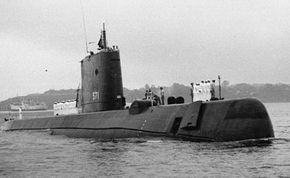Going Nuclear: The First Nuclear-powered Submarine
The United States developed the world's first nuclear-powered submarine: the Nautilus. Its first nuclear-powered journey took place on Jan. 21, 1954. In contrast to the diesel-electric subs that preceded it (and are still in service around the world today), the Nautilus had a practically unlimited range. What's more, it could stay underwater for great lengths of time because it didn't have to surface to recharge electric batteries. And while most submarines were designed to travel primarily on the surface and dive on occasion, the Nautilus was designed to remain underwater and only surface on occasion.
Advertisement
The incredible range and maneuverability of nuclear submarines radically altered naval strategy and tactics. While submarines previously were maintained for coastal defense, this new breed of submarine could -- and did -- travel the globe. Just a few years after being put to sea, the Nautilus became the first submarine to sail beneath the arctic ice, reaching the North Pole on Aug. 3, 1958. After it reached the North Pole, the Nautilus was overhauled and had its reactor changed. Then it was assigned to the Sixth Fleet in 1960. By this time, more advanced technologies were being developed and Nautilus functioned as a trainer sub after 1966.
Being able to travel the globe undetected meant that enemy military and commercial ships were exposed to submarine attack at any time and virtually any place on the Earth's oceans. Over time, the submarines were armed with ballistic missiles capped with nuclear warheads. A few years after the Nautilus, an alarmed Soviet Union developed its own nuclear submarine capabilities.
The development of nuclear submarines followed a similar arch with both nations -- first, submarines were developed that were powered by nuclear reactors but still used non-nuclear armaments. Then, submarines were both powered by reactors and armed with ballistic nuclear weapons.
The USSR didn't commission its first nuclear sub until 1958, and the submarine didn't cross the North Pole until 1962. The development of a nuclear submarine took the Soviets about five years' time from drawing board to commissioning. Early Soviet subs, such as the K-19 (known as the "Widowmaker"), were plagued by problems and resulted in several fatal accidents. The Soviet Union launched its first nuclear sub armed with ballistic nuclear missiles in 1960, the same year that feat was accomplished by the U.S. Throughout the Cold War, the Soviet Union continued produce (and still does produce) diesel-electric submarines armed with nuclear warheads.
Next, we'll learn how the U.S and the USSR put their nuclear subs to use during the Cold War.
